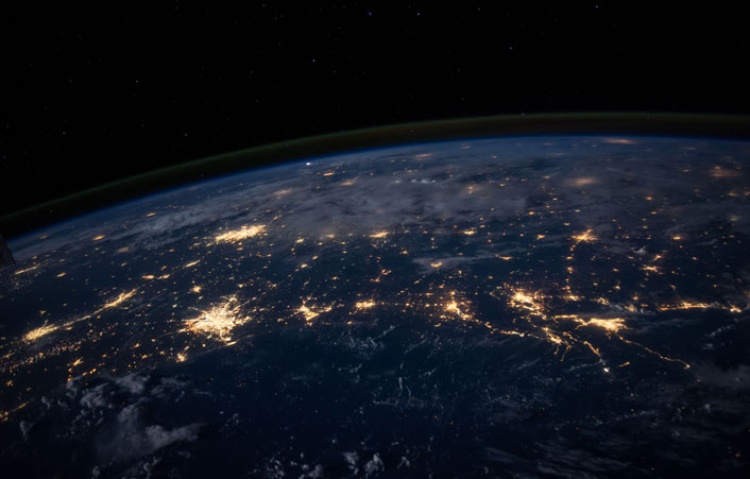Question from a Reader:
I get the earth will be resurrected like our bodies will be resurrected, but 2 Peter 3 makes it sound pretty dramatic with the fire, and like a clean sweep. So does everything melt and the matter is all broken down, then God resurrects the New Earth from those pieces? Or is it more like the flood, where everything is covered and “destroyed,” but the basic form is still there?
Answer from Randy Alcorn:
Some say there will be a fiery meltdown of the earth’s surface, not the total destruction of the entire earth. But either works in analogy with the bodily resurrection since a totally disintegrated body will rise just like one that has died two days ago.
Here are some related excerpts from my book Heaven:
Wayne Grudem, in his discussion of 2 Peter 3:10, which speaks of “everything” in the earth being “laid bare,” suggests that Peter “may not be speaking of the earth as a planet but rather the surface things on the earth (that is, much of the ground and the things on the ground).” [1]
Anthony Hoekema said, “If God would have to annihilate the present cosmos, Satan would have won a great victory. . . . Satan would have succeeded in so devastatingly corrupting the present cosmos and the present earth that God could do nothing with it but to blot it totally out of existence. But Satan did not win such victory. On the contrary, Satan has been decisively defeated. God will reveal the full dimensions of that defeat when he shall renew this very earth on which Satan deceived mankind and finally banish from it all the results of Satan’s evil machinations.” [2]
John Piper argues that God did not create matter to throw it away. He writes, “When Revelation 21:1 and 2 Peter 3:10 say that the present earth and heavens will ‘pass away,’ it does not have to mean that they go out of existence, but may mean that there will be such a change in them that their present condition passes away. We might say, ‘The caterpillar passes away, and the butterfly emerges.’ There is a real passing away, and there is a real continuity, a real connection.” [3]
My wife, Nanci, and I will never forget driving home from church on May 18, 1980, and seeing a cloud of volcanic ash billowing overhead. It was the eruption of Mount Saint Helens, seventy miles from our home. For weeks, ash fell so thick every day that we repeatedly had to hose off windshields and driveways. Many people in the Portland area wore surgical masks to keep from choking. The destruction of the once-beautiful mountain and its surrounding area was catastrophic. Great trees were charred and fallen like giant matchsticks. The devastation appeared comprehensive. Experts predicted that it would certainly be decades, possibly centuries, before the area came back to life. Yet within only a few years it had begun to be restored, demonstrating healing properties that God has built into his creation, evident even under the Curse.
After seeing such utter devastation replaced by new beauty—even apart from God’s supernatural intervention—I have no trouble envisioning God remaking a charred Earth into a new one, fresh and vibrant.
…many cannot reconcile the idea of redemption through restoration with the statements of 2 Peter 3:10 that “the heavens will disappear with a roar,” and “the elements will be destroyed by fire,” and “the earth and everything in it will be laid bare.” John Piper says of this passage, “What Peter may well mean is that at the end of this age there will be cataclysmic events that bring this world to an end as we know it—not putting it out of existence, but wiping out all that is evil and cleansing it by fire and fitting it for an age of glory and righteousness and peace that will never end.” [4]
I think the key to understanding the qualified meaning of these images of destruction in 2 Peter lies within the passage itself. The passage draws a parallel between the earth in the time of Noah, which was “destroyed” through the Flood, and the time to come when the present world will be destroyed in judgment again, this time not by water but by fire (2 Peter 3:6-7). The stated reference point for understanding the future destruction of the world is the Flood. The Flood was certainly cataclysmic and devastating. But did it obliterate the world, making it cease to exist? No. Noah and his family and the animals were delivered from God’s judgment in order to reinhabit a new world made ready for them by God’s cleansing judgment. Flooding the whole world didn’t destroy all the mountains (Genesis 8:4). Though many people believe that the Tigris and Euphrates rivers near Eden (Genesis 2:14) weren’t the same rivers as those we know today, the fact that they were given the same names as the originals suggests some continuity.
The cleansing with fire will be more thorough than the Flood in that it will permanently eliminate sin. But just as God’s judgment by water didn’t make the earth permanently uninhabitable, neither will God’s judgment by fire.
The King James Version translates 2 Peter 3:10 this way: “The earth also and the works that are therein shall be burned up.” But the word translated “burned up” does not appear in the oldest Greek manuscripts, which contain a word that means “found” or “shown.” The New International Version translates it “laid bare,” and the English Standard Version renders it as “exposed.” God’s fire of judgment will consume the bad but refine the good, exposing things as they really are.
Theologian Cornelius Venema explains, “The word used in the older and better manuscripts conveys the idea of a process that does not so much destroy or burn up, but uncovers or lays open for discovery the creation, now in a renewed state of pristine purity.” [5] Likewise rejecting “burned up” as the best translation, Albert Wolters argues that “translations of this text have often been influenced by a world view that denies the continuity between the present and future state of creation.” [6]
…When a house burns to the ground, the components of the house do not cease to exist, but take on another form. According to the first law of thermodynamics (conservation of energy), the fire doesn’t obliterate the wood but transforms it into different substances, including charcoal and carbon dioxide. What we consider annihilation is not what it appears.
Resurrection, however, goes beyond that. A new house is not made out of the materials of a house that burned, but out of new materials. Though it may be on the same ground, made according to the same blueprint, it’s a different house. Resurrection, however, is about continuity—the same body that was destroyed is reconstructed into the new.
As God may gather the scattered DNA and atoms and molecules of our bodies, he will regather all he needs of the scorched and disfigured Earth. As our old bodies will be raised to new bodies, so the old Earth will be raised to become the New Earth. So, will the earth be destroyed or renewed? The answer is both—but the “destruction” will be temporal and partial, whereas the renewal will be eternal and complete.
[1] Wayne Grudem, Systematic Theology: An Introduction to Biblical Doctrine (Grand Rapids: Zondervan, 1994), 1160–61.
[2] Anthony A. Hoekema, The Bible and the Future (Grand Rapids: Eerdmans, 1979), 280.
[3] John Piper, Future Grace (Sisters, Ore.: Multnomah, 1995), 371, 376.
[4] Piper, Future Grace, 376.
[5] Cornelius P. Venema, The Promise of the Future (Trowbridge, UK: Banner of Truth, 2000), 468.
[6] Albert M. Wolters, quoted in Venema, Promise of the Future, 468.




